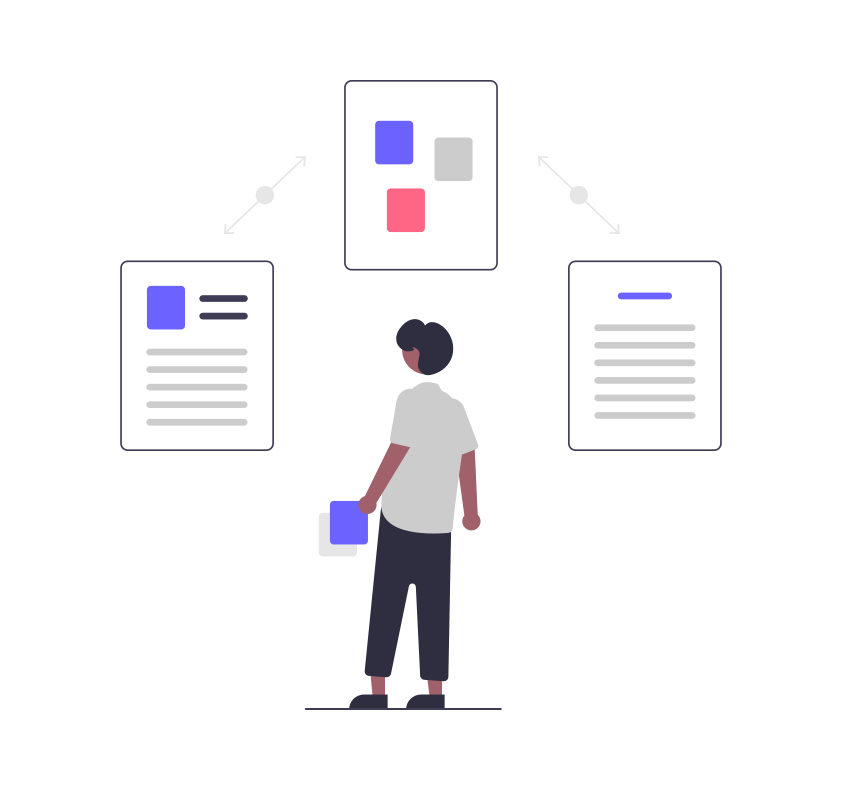In the B2B tech landscape, customer retention is just as crucial as customer acquisition. While bringing in new clients is essential for growth, retaining existing customers is often more cost-effective and vital for long-term success. Customer retention goes beyond keeping customers satisfied; it involves cultivating strong relationships that lead to repeat business, higher customer lifetime value, and advocacy. Account-Based Marketing (ABM) offers a strategic approach to customer retention by focusing on personalized, targeted engagement with existing accounts to reduce churn and build long-term loyalty. This blog explores the key strategies for leveraging ABM to achieve these objectives, structured around a different style to provide fresh insights.
1. Mindset Shift: From Transactional to Relational Marketing
Traditional marketing often takes a transactional approach — focused on one-time purchases or conversions. In contrast, ABM shifts the mindset to relational marketing, which prioritizes long-term engagement and value creation over individual transactions. This shift is particularly powerful for customer retention in B2B tech, where relationships and trust are key.
-
Focus on Value: Instead of pushing for the next sale, concentrate on delivering ongoing value to your existing clients. Use ABM to continuously communicate the benefits of your products or services, keeping clients informed about updates, new features, and industry trends.
-
Nurture Relationships: ABM allows you to maintain a consistent dialogue with clients. Regular check-ins, personalized content, and tailored solutions help nurture these relationships and position your business as a trusted partner rather than just a vendor.
2. Strategic Segmentation: Targeting the Right Accounts
Effective customer retention through ABM begins with strategic segmentation. Not all customers are created equal — some provide higher value, others have longer lifecycles, and some might be at higher risk of churn. Segmentation allows you to prioritize and tailor your retention strategies accordingly.
-
Identify High-Value Accounts: Use data analytics to identify accounts that generate the most revenue or have the potential to do so. Prioritize these accounts for targeted retention efforts.
-
Segment Based on Risk: Segment your customer base based on churn risk. Identify warning signs such as declining usage patterns, reduced engagement, or negative feedback. ABM campaigns can then be tailored to re-engage and address the concerns of at-risk customers.
3. Personalized Engagement: The Heart of Retention
Personalization is the cornerstone of ABM and a critical component of customer retention. By tailoring your communication and engagement strategies to the specific needs and preferences of each client, you can enhance their overall experience and satisfaction.
-
Customize Content: Develop a content strategy that caters to the unique needs of different customer segments. This might include personalized newsletters, targeted product updates, or custom webinars that address specific challenges faced by the client.
-
Tailored Solutions: Offer solutions that are tailored to the client’s specific needs. Use data insights to understand their business objectives and pain points, and provide recommendations that align with their goals.
4. Data-Driven Insights: Understanding and Anticipating Client Needs
Data is a powerful tool in ABM, especially for customer retention. By leveraging data-driven insights, you can better understand client behavior, anticipate their needs, and proactively address potential issues before they lead to churn.
-
Analyze Customer Behavior: Use data analytics to track customer interactions with your brand across various touchpoints. This could include website visits, content downloads, and engagement with your customer support team. Identify patterns that indicate satisfaction or dissatisfaction.
-
Predictive Analytics: Employ predictive analytics to anticipate client needs and behaviors. This allows you to proactively offer solutions or address concerns before they escalate into churn.
5. Cross-Departmental Collaboration: Aligning Sales, Marketing, and Customer Success
ABM requires a unified approach across departments. For effective customer retention, it’s crucial that sales, marketing, and customer success teams work together to deliver a seamless, consistent customer experience.
-
Unified Customer View: Ensure all teams have access to a unified view of the customer. This includes historical data, engagement metrics, and communication logs. A comprehensive understanding of the client helps in delivering a cohesive experience.
-
Coordinated Efforts: Align your retention strategies across departments. For example, if a customer success manager identifies a potential churn risk, they should work with the marketing team to deploy a targeted ABM campaign designed to re-engage the client.
6. Building Trust and Advocacy: The Ultimate Retention Goal
Retaining customers is not just about preventing them from leaving; it’s about turning them into advocates for your brand. Trust and advocacy are the ultimate goals of any retention strategy and are achievable through consistent, value-driven engagement.
-
Deliver Consistent Value: Ensure that every interaction with the client adds value to their experience. Consistency in value delivery builds trust and positions your company as a reliable partner.
-
Encourage Advocacy: Satisfied customers are more likely to become advocates. Encourage this by creating programs that reward advocacy, such as referral incentives or exclusive access to new features and products.
7. Continuous Improvement: Feedback and Adaptation
Retention is an ongoing process that requires continuous improvement. ABM allows you to gather feedback from clients and adapt your strategies accordingly.
-
Gather Feedback Regularly: Use surveys, feedback forms, and direct client communication to gather insights on their experience with your brand.
-
Adapt and Evolve: Use the feedback to refine your ABM strategies, ensuring they remain relevant and effective in addressing the evolving needs of your customers.
Conclusion
In the B2B tech sector, customer retention is not just about keeping clients; it’s about building long-lasting relationships that drive ongoing value and growth. By leveraging the principles of Account-Based Marketing, companies can create personalized, data-driven strategies that reduce churn and foster long-term loyalty. Through a combination of strategic segmentation, personalized engagement, cross-departmental collaboration, and continuous improvement, ABM provides a robust framework for turning satisfied customers into loyal advocates. In a competitive market, this approach can be the difference between a one-time sale and a lifetime partnership.


